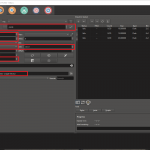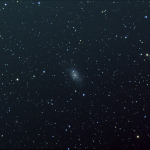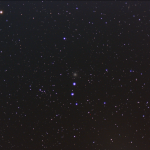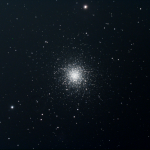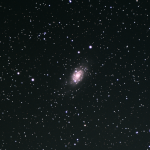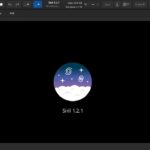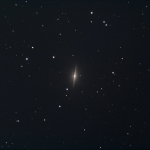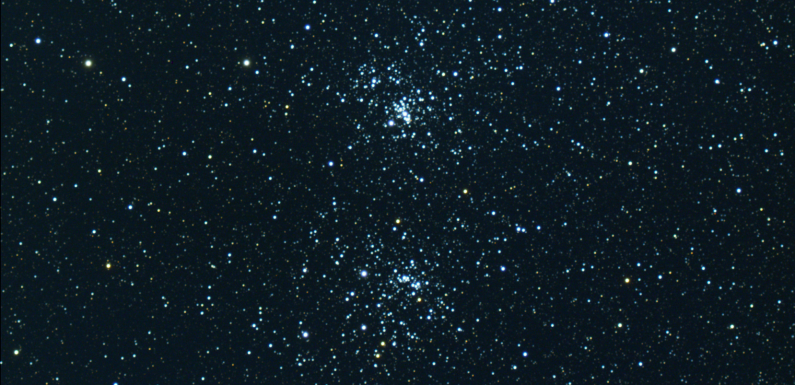
Saturday night was a nice clear night. In the mid-40s when I started out, but temperatures fell to near freezing during the session. The Moon was near full, VERY bright, and right up in the middle of the sky. So that was kind of an issue. Still not a bad night to do some looking around.
I took some time to shoot new darks for both 30 second and 60 second exposure lengths, and I used SharpCap to create the master darks for each. I also shot a set of flats, but I think the panel was a bit too bright so I don’t think they are quite right but they seemed to somewhat work ok.
I spent a bit of time, about 45 minutes, tinkering with the Ekos Polar Alignment routine. I first did a visual polar alignment, then ran the Ekos Polar Alignment routine three times. Once to the West, then to the East, then back to the West. This seemed to work pretty well and I was able to get the polar alignment error to under 10 arcseconds in both altitude and azimuth.
The EAA images in this post were capture with my ZWO ASI294MC Pro cooled to -10 C through my SVBONY SV503 102ED scope with 0.8 Focal Reducer and a SVBONY IR/UV Cut filter. Focus was obtained with the ZWO EAF using the Ekos Focus Module. The images were live stacked using SharpCap Pro. The mount and cameras are remotely controlled with KStars/Ekos with INDI Server running on a Raspberry Pi. The images have been resized (80% of original) and/or cropped for file size but otherwise appear just as I observed them.
All images during this session were shot with 121 gain, 30 offset, and bin 2×2.
NGC 2273 is a barred spiral galaxy located in the constellation Lynx. This is a live stack of 10 x 30 second and 25 x 60 second exposures. NGC 2273 is part of the CloudyNight’s January 2023 EAA Observing Challenge.
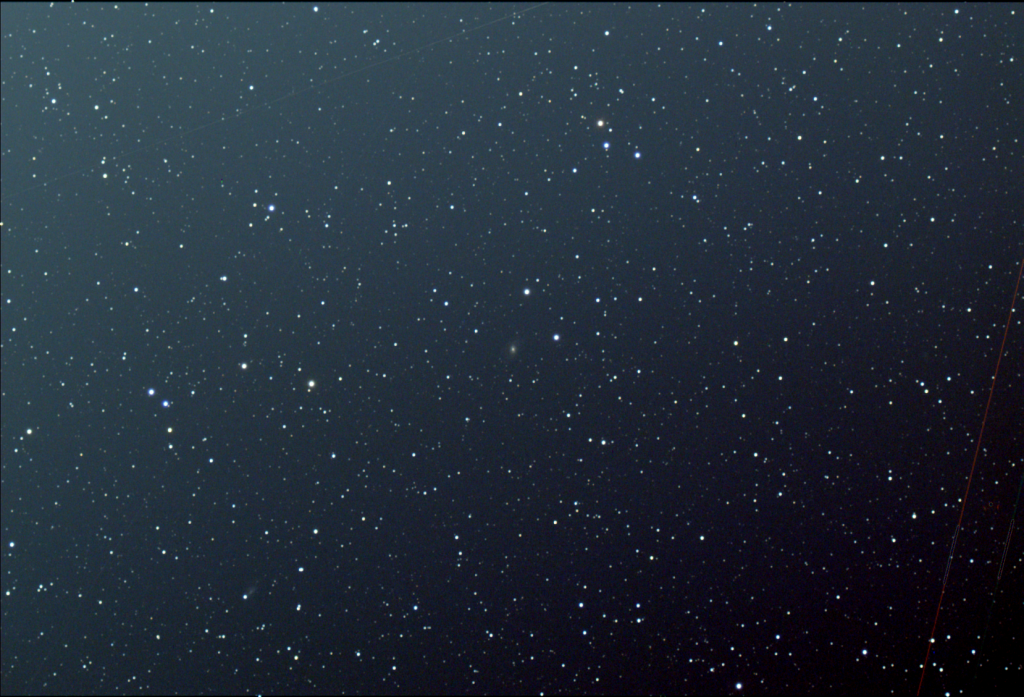
I am just able to resolve the spiral arms, well kind of. There is at least some evidence that they should be there. I am definitely going to revisit this one on a darker night. I am sure we can get some more detail. The galaxy, NGC 2273B, can be resolved in the lower left of the FOV. You can definitely see some of the glow from the Moon in this stack.
NGC 2403 is an intermediate spiral galaxy in the constellation Camelopardalis. This is a live stack of 10 x 30 second and 20 x 60 second exposures. NGC 2403 is part of the CloudyNight’s January 2023 EAA Observing Challenge.
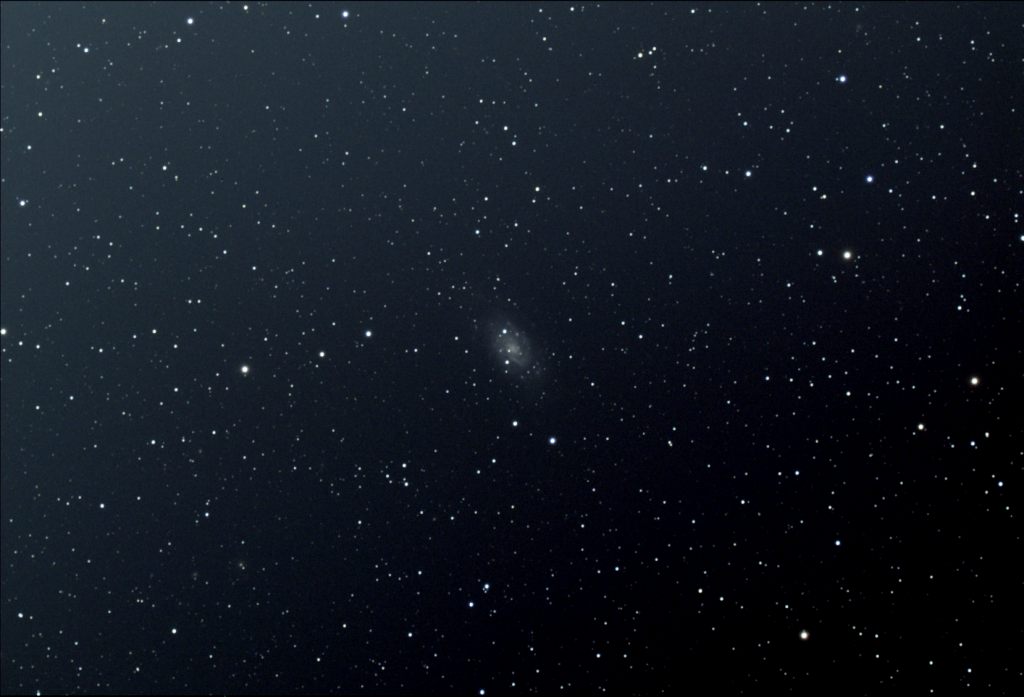
I have visited NGC 2403 in the past, it is a bright member of the M81 Group. This is the first time it has been in the FOV of the SV503 102ED with the ASI 294 camera. Definitely a bit washed out from the Moon, but still a nice view. There is another faint fuzzy galaxy in the lower left, UGC 3894.
Abell 21, Medusa Nebula, a planetary nebula in the constellation of Gemini. This is a live stack of 10 x 30 second and 10 x 60 second exposures. Abell 21 is part of the CloudyNight’s January 2023 EAA Observing Challenge.
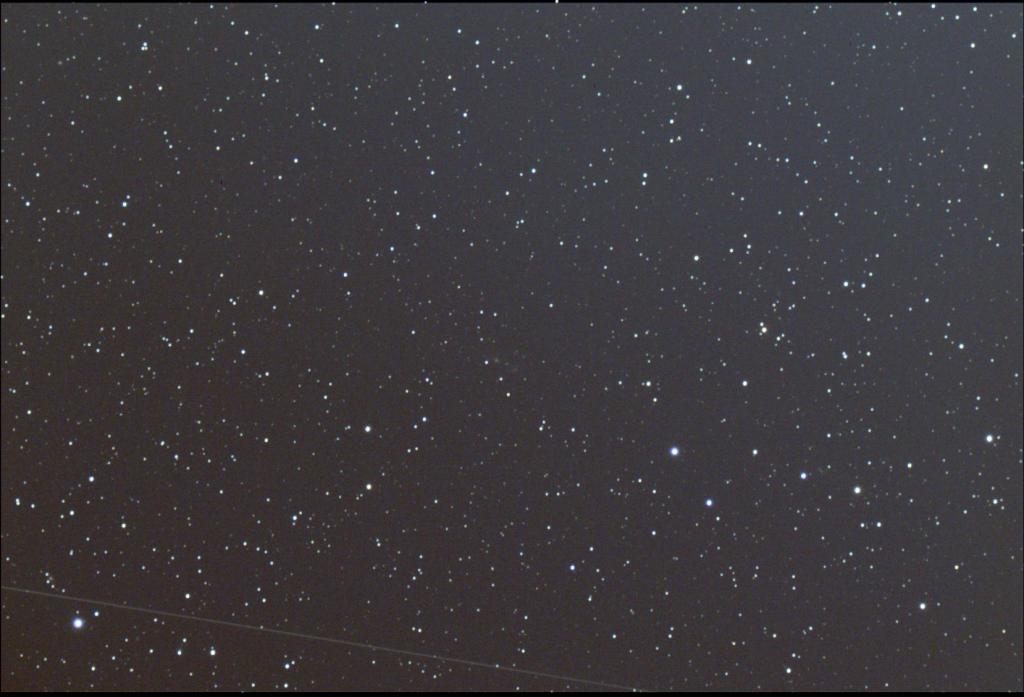
Was not able to resolve really any detail. There is a faint smudge in the center of the FOV which based on plate solving results is Abell 21, but I would not be able to id it as such or even as a planetary nebula. Might be worth visiting again with the SV503 on a Moonless night, but I am guessing I would have better luck with this one in the C8.
NGC 67 is an elliptical galaxy located in the constellation Andromeda. This is a live stack of 10 x 30 second and 10 x 60 second exposures.
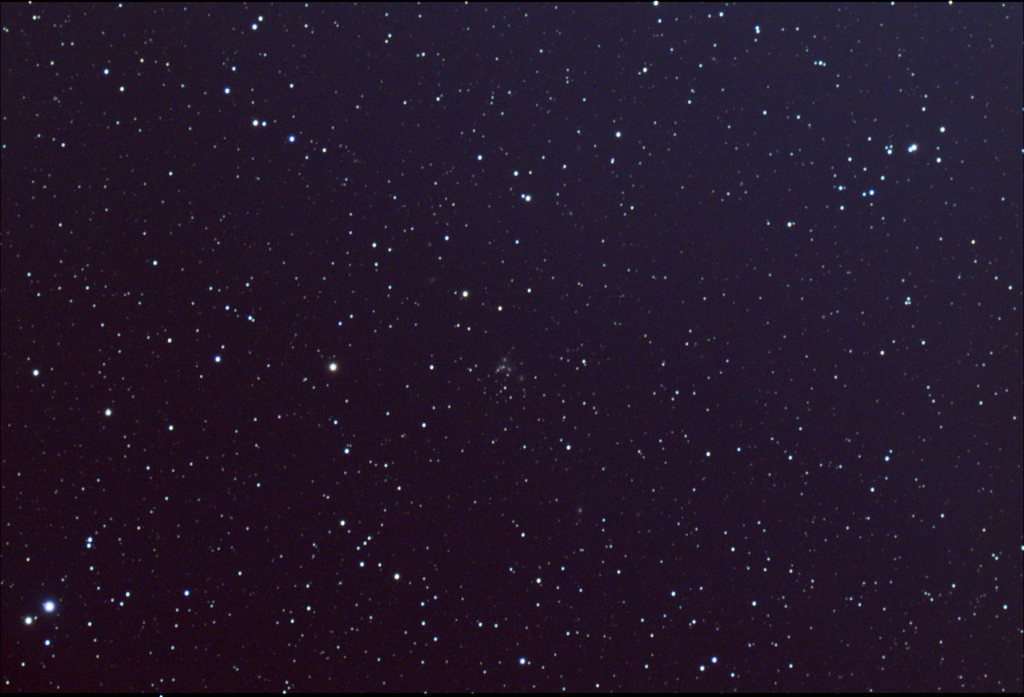
I noticed this group of galaxies in KStars in close proximity to Abell 21, so I decided to have a look. NGC 67 is a small faint galaxy in the center of the FOV. There are many other galaxies which, like NGC 67, are part of the NGC 68 Galaxy Group. Here is the same FOV with the SharpCap Deep Sky Image annotation to help point out a few:
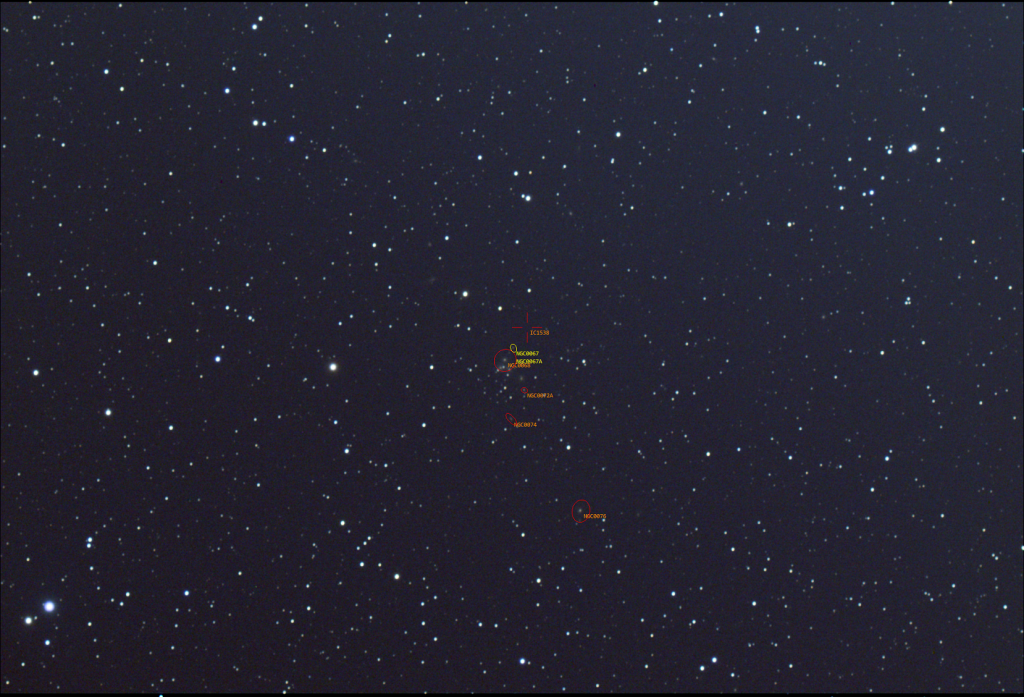
M31, the Andromeda Galaxy, in the constellation of Andromeda. This is a live stack of 10 x 30 second and 20 x 60 second exposures.
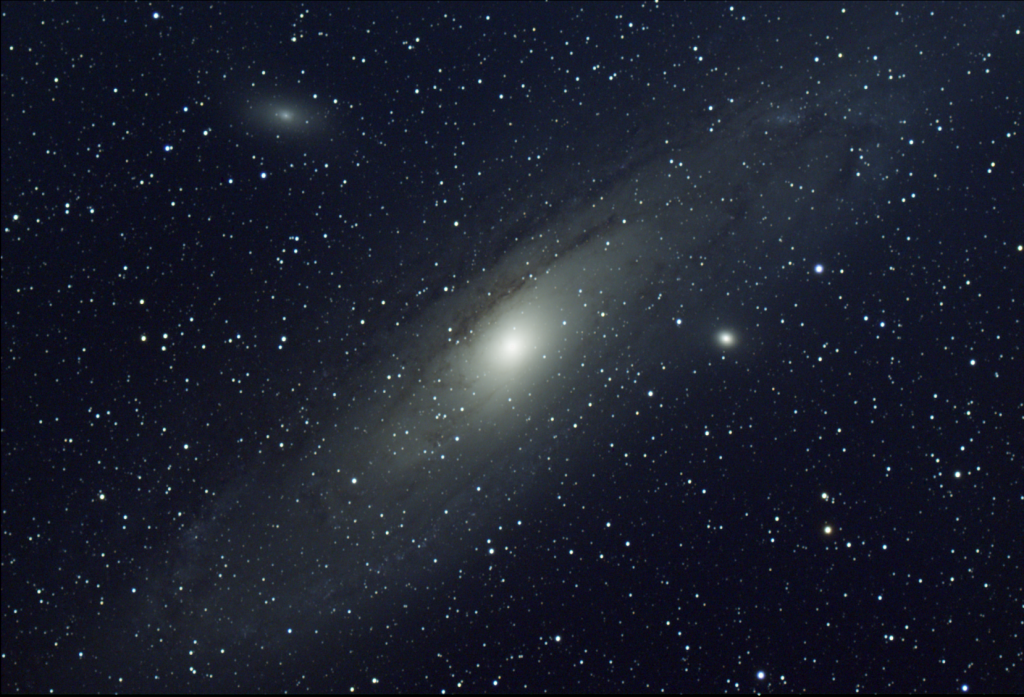
The Andromeda Galaxy was also in the area of sky I was pointing so I decided to have a look. Very nice. M110 is in the top left, and M32 is just to the right. With where Andromeda was in the sky and the orientation of the telescope the framing was almost perfect.
NGC 457, the Owl Cluster, an open star cluster in the constellation of Cassiopeia. This is a live stack of 10 x 30 second and 10 x 60 second exposures.
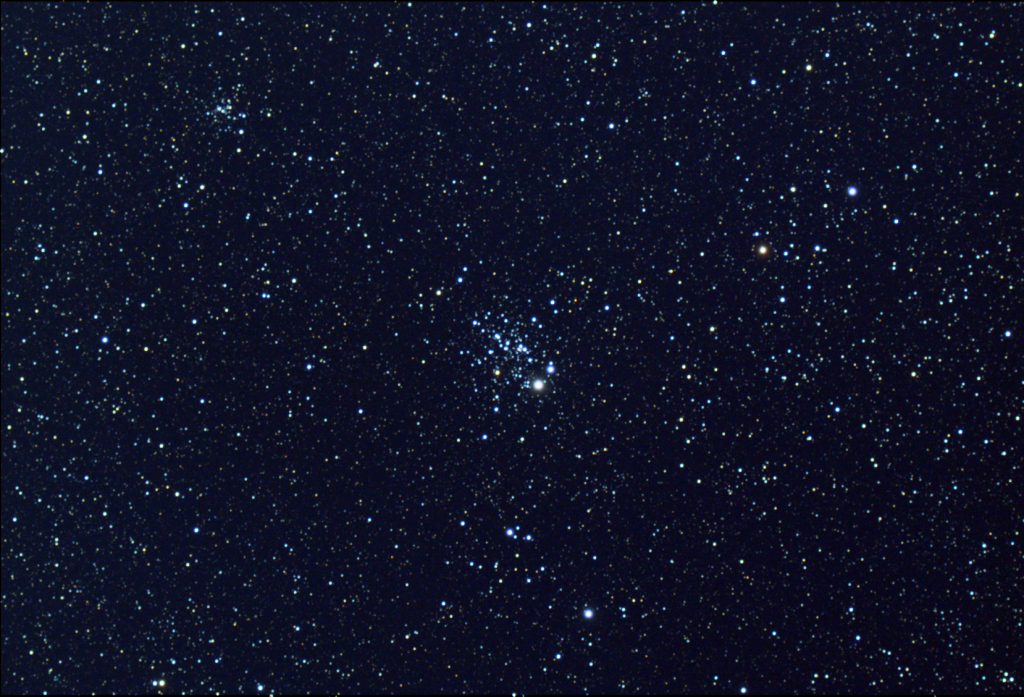
As you may know this is one of my favorites. Nice view here, lots of nice blue, red, and yellow stars.
NGC 281, the Pacman Nebula, is an emission nebula in the constellation of Cassiopeia. This is a live stack of 10 x 30 second and 20 x 60 second exposures.
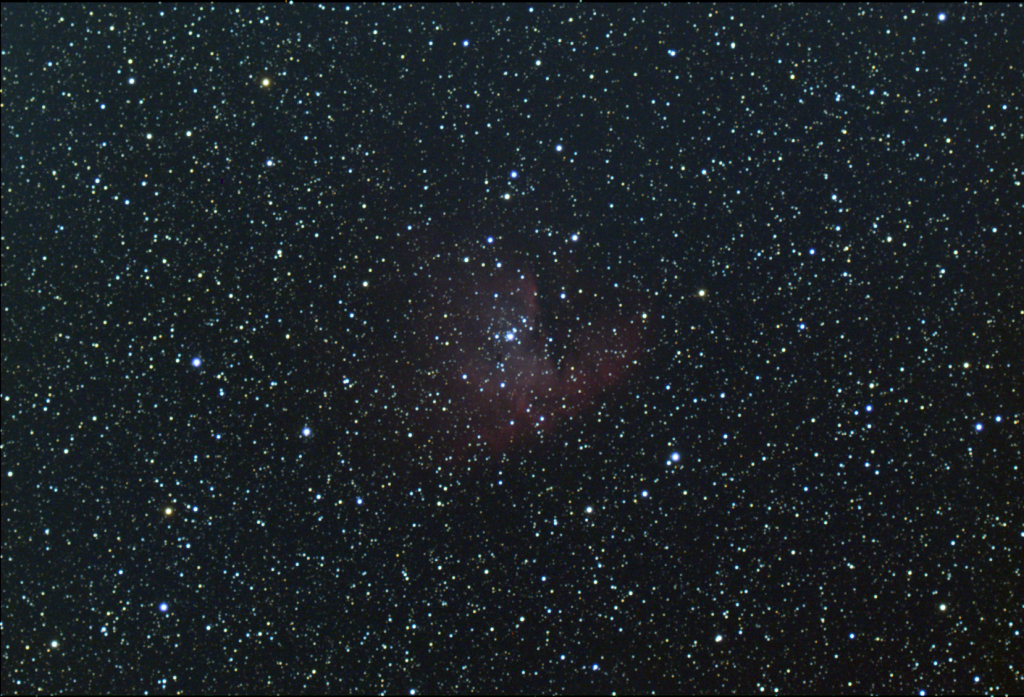
Just stopped by to have a look since I was already in that area of the sky. Even with the full Moon there is some detail which is resolvable especially in some of the dark edges.
Messier 41 (M 41) is an open cluster in the constellation Canis Major. This is a live stack of 10 x 30 second and 10 x 60 second exposures. M 41 is part of the CloudyNight’s January 2023 EAA Observing Challenge.
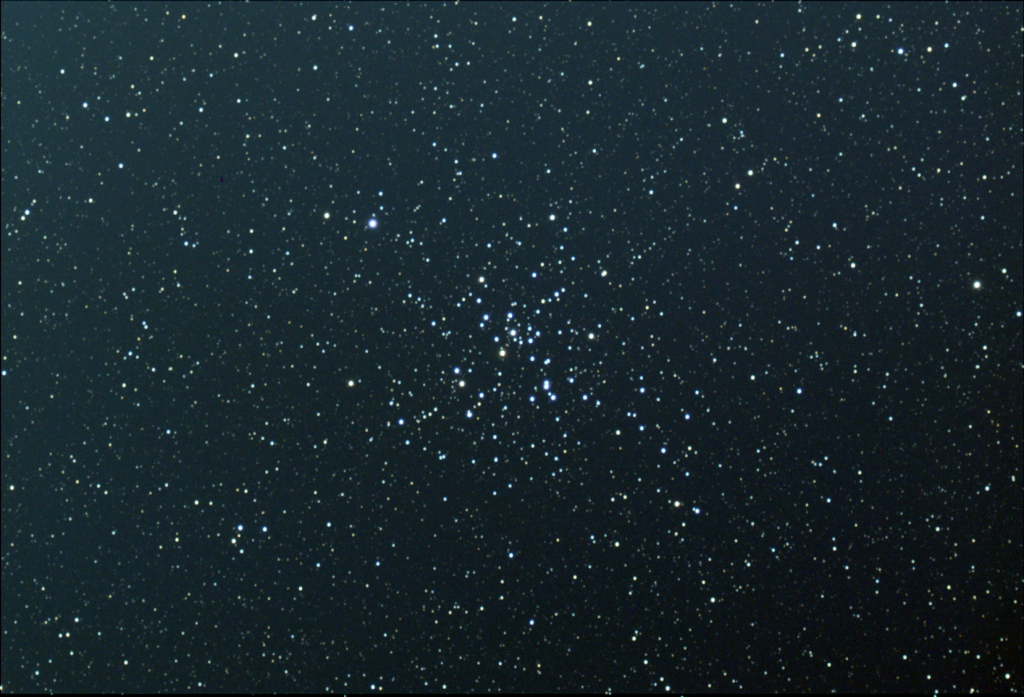
Big open cluster which fills in the FOV nicely. Several nice yellow stars.
Messier 79 (M 79) is a globular cluster in the constellation Lepus. This is a live stack of 10 x 30 second and 10 x 60 second exposures. M 79 is part of the CloudyNight’s January 2023 EAA Observing Challenge.
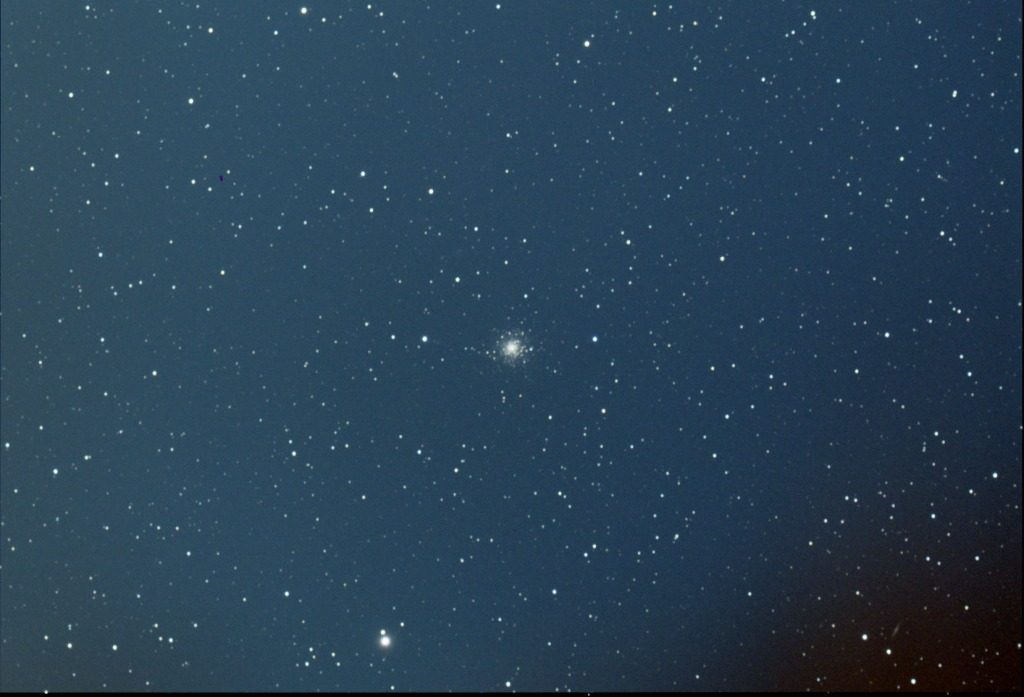
M 79 is in the southern part of the sky. It started out looking pretty nice as the frames stacked, but then it started to look like there were some clouds. Nope I was shooting it through the Maple tree in the backyard 🙂
NGC 869 and NGC 884, the Double Cluster, in the constellation of Perseus. This is a live stack of 10 x 30 second and 10 x 60 second exposures.
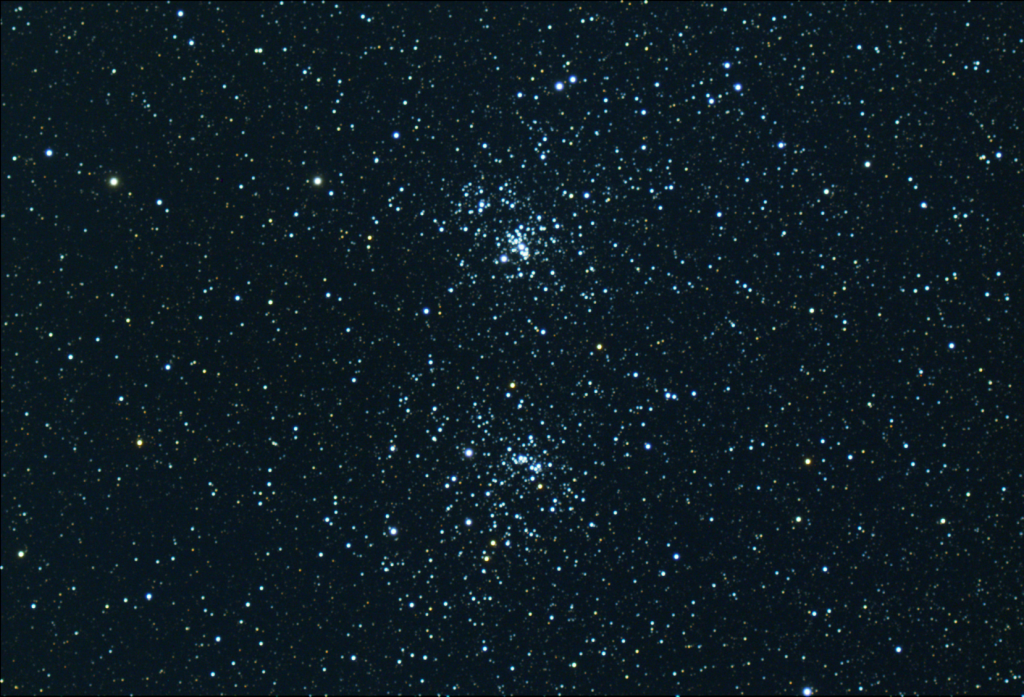
NGC 869 is at the top of the FOV and NGC 884 is at the bottom. Another one of my favorites. The yellow stars are really nice in these.
I packed up the gear around 11 PM Eastern. Another great EAA session. The Moon was bright enough I didn’t even need a flashlight. The Moon is waning now so darker skies are on the way (let’s hope clear skies are as well).

